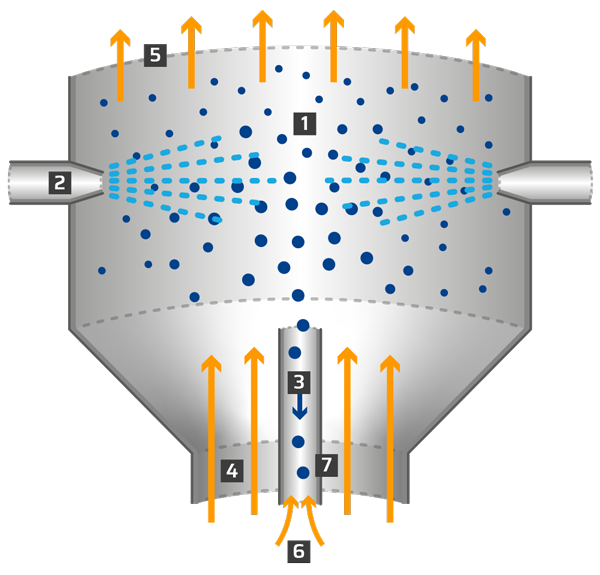Spray granulation is the best choice when it comes to getting liquid substances into a solid form. Granulation by means of fluidized bed technology ensures free-flowing granulates with specifically influenceable product properties. Different customers require different sizes and properties of the granulates for spray granulation. Whatever you need: inprotec GmbH, as a contract manufacturer and contract dryer, offers you the right solution.
The fluidized bed spray granulation ensures that the granulates are dust-free for later processing. At the same time, they have a better water solubility and similar particle sizes need the same time to dissolve. The spray-granulated particles are ideally suitable for further processing steps such as tablet forming or the manufacture of instant products. Due to their small surface area, they are hardly hygroscopic. The pourable and almost dust-free granulates are easy to dose or fill, which also simplifies the processing.
Process
Before the actual spray granulation begins, we can mix, disperse, emulgate, heat, cool and, if necessary, neutralise or carry out simple chemical transformation reactions on either solid or liquid starting materials in our fluidized bed plants or additional equipment. Then, raw materials and initial products for the granulation are transformed into a liquid and therefore atomizable form.

- fluidized bed
- spray solution
- granulate discharge
- inlet air
- exhaust air
- sifter air
- sifter outlet
The fluidized bed granulation principle is shown in the schematic diagram above. In this process, the liquid (2) is atomized into ultra-fine droplets (diameter: 20–50 µm) by several two-material nozzles. The droplets enter the air stream (4) of the fluidized bed unit and dry instantaneously due to the direct and intensive heat exchange. The moist air is discharged (5) through the top of the unit. The fluidized bed drying initially produces minute particles – the so-called germs. These are held in suspension in the fluidized bed (fluidization, 1). Continuously atomized droplets adhere to their surface and dry so that a so-called onion structure or snowball structure builds up. The particles are discharged from the process (3) and; at the same time, are classified in a sifter (6) so that coarse particles are discharged (7) and fine particles are fed back into the process chamber to allow their continuous build-up to a certain particle size. The classifying discharge allows particles to be removed from the reactor flexibly, continuously and without interrupting the drying process. Particles sizes between 200 and 5,000 µm can be set freely. The fluidized bed spray granulation therefore unites the drying with a precisely definable particle formation.
In the spray granulation, the particles are enveloped with several layers of the spray material so that the process is also known as build-up granulation. If several materials are sprayed at the same time, the so-called co-granulation is performed. Generally, the starting materials and the process conditions in the spray granulation processes can be configured in such a way that various particle morphologies with different properties and characteristics can result. Thanks to their often round shape, the granulates are ideal for subsequent coating.

Advantages
- Easily dosable, dust-free granulates
- Improved dissolution and redispersion of the granulates in water
- Granulates suitable for forming tablets (direct compression)
- Defined particle size distribution
- Dense surface structure of the granulates
- Low wear
- Low hygroscopicity
- High bulk weight

